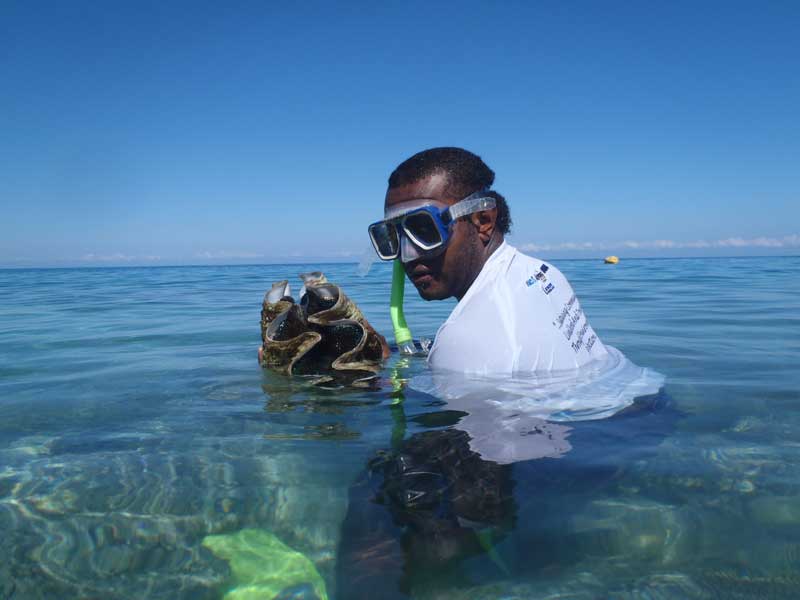Research into the reproduction culture of giant clams has become an important module in the process of repopulating depleted coral reefs around the globe.
In the Mamanuca Group of Islands, clam farming was started in 2005 as a project by the Mamanuca Environment Society (MES).
Baby giant clams were supplied to MES by the Fisheries Department nursery on Makogai Island which was declared as marine reserve in 1986.
Nowadays, there are mini clam nurseries in Castaway Island Resort, Tokoriki Island Resort, Treasure Island Resort, South Sea Island, Mana Island Resort and Solevu village house reef.
In Tokoriki alone, three species of Clams, Tridacna Giga (Giant), Tridacna Squamosa (Fluted) and Tridacna Derasa (Smooth) have been planted around the island.
This is a significant conservation step for Fiji as Tridacna Gigas and Tridacna Derasa are the first of their species to be re-introduced to Western Fiji – having become extinct in the 1960’s.
MES Project Manager Betani Salusalu said Giant Clams are the largest molluscs on Earth capable of reaching 1 to 2 metre in length and weighing over 330kilogram.
“The giant clam is one of the most fascinating inhabitants of the Fijian Reefs. If allowed to reach full maturity they can grow to the size of a bathtub. Indeed in some of the islands of Fiji the islanders still use the shell of Tridacna Gigas as babies baths.”
“For seven yeas they have been placed in the cage to protect them from predators like octopus, crabs and parrotfish and now they are ready to be placed on the reef,” said Mr Salusalu.
There are nine species of giant clams and just like the coral polyp, they house the symbiotic algae (zooxanthellae) that provide it with sugars, proteins and also giving it their brilliant colours.
Besides the nutrition provided by this algae, clams use their siphon to suck in water and filter out all the nutrients and passing plankton in return supplying corals with clean nutrient free water.
Mr Salusalu said Giant clams are increasingly rare on Fiji’s coral reefs. And because they are tasty, resorts staff sometimes eats the raised clams.
“Farming giant clams is a slow process that takes several years. It takes 3-10 years for giant clams to mature from larvae into a clam large enough to be safe on the reef. We hope to raise enough clams to naturally populate Fiji’s reefs and giant clams can be a common source of food once again,” says Mr Salusalu.


